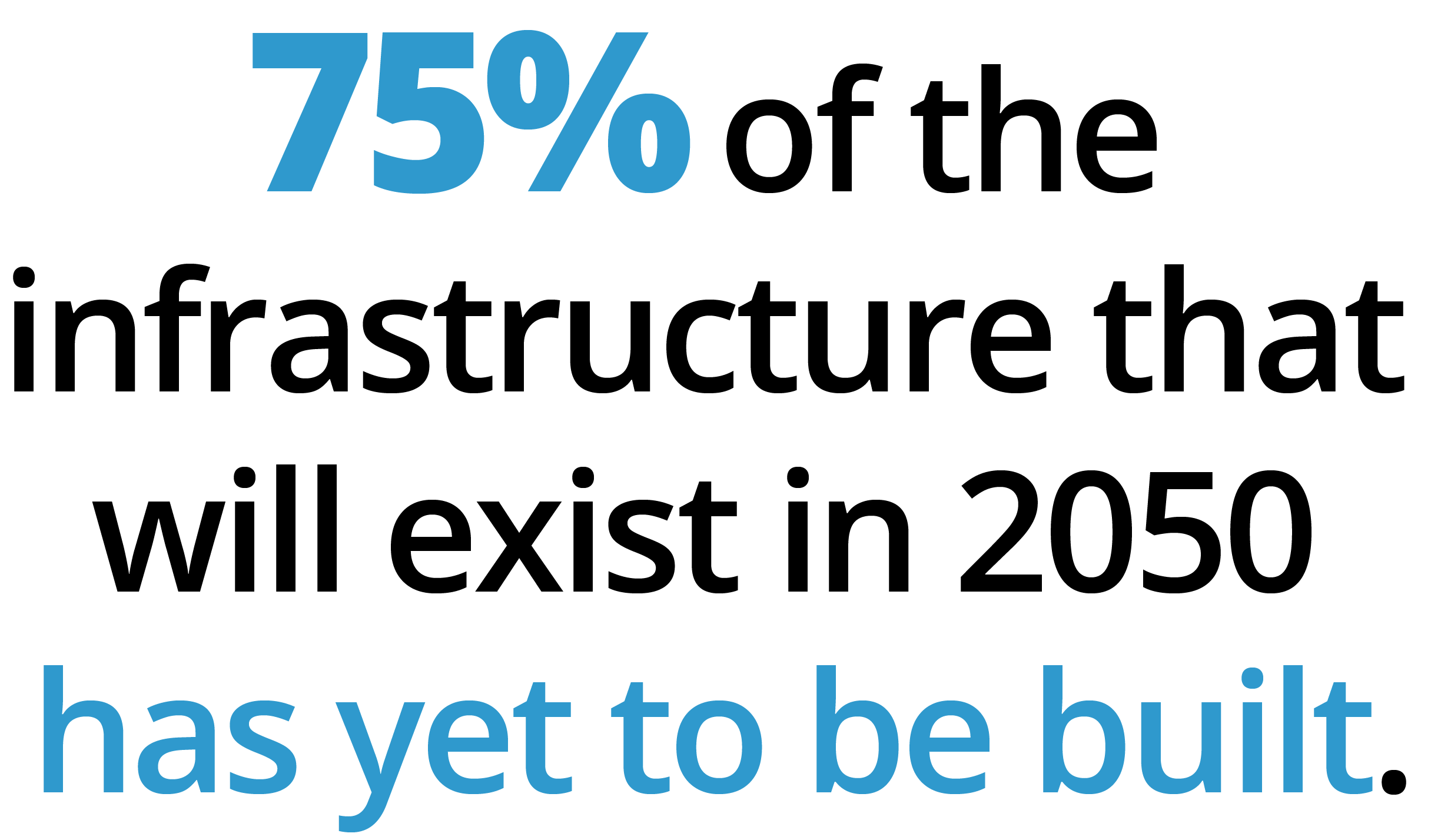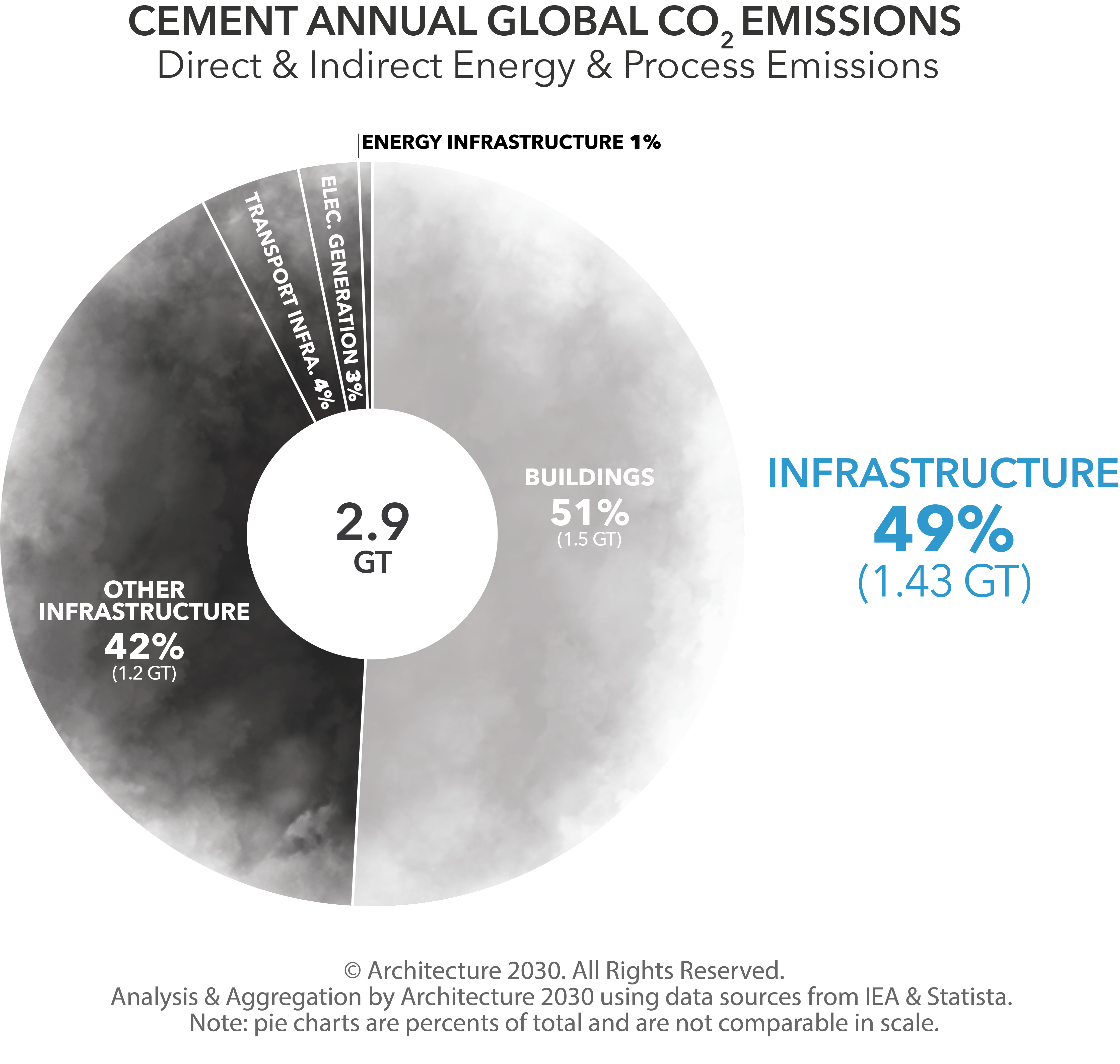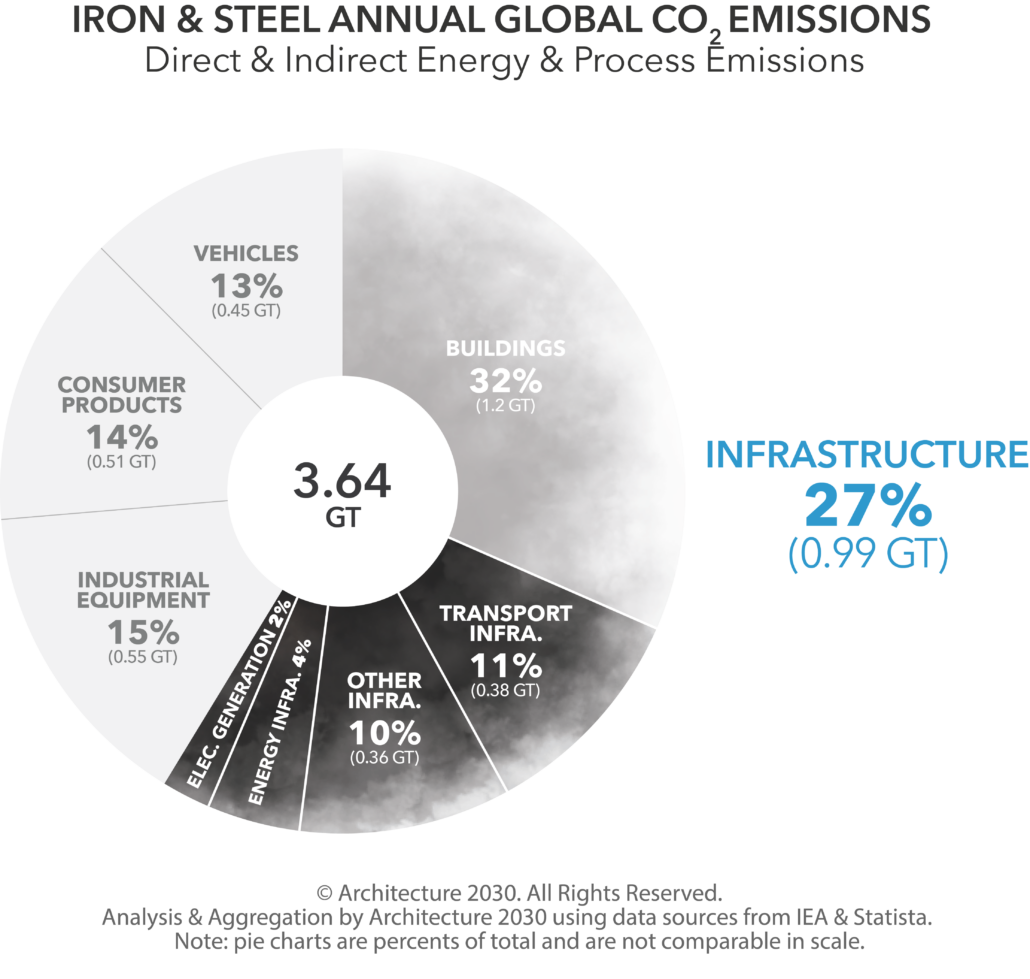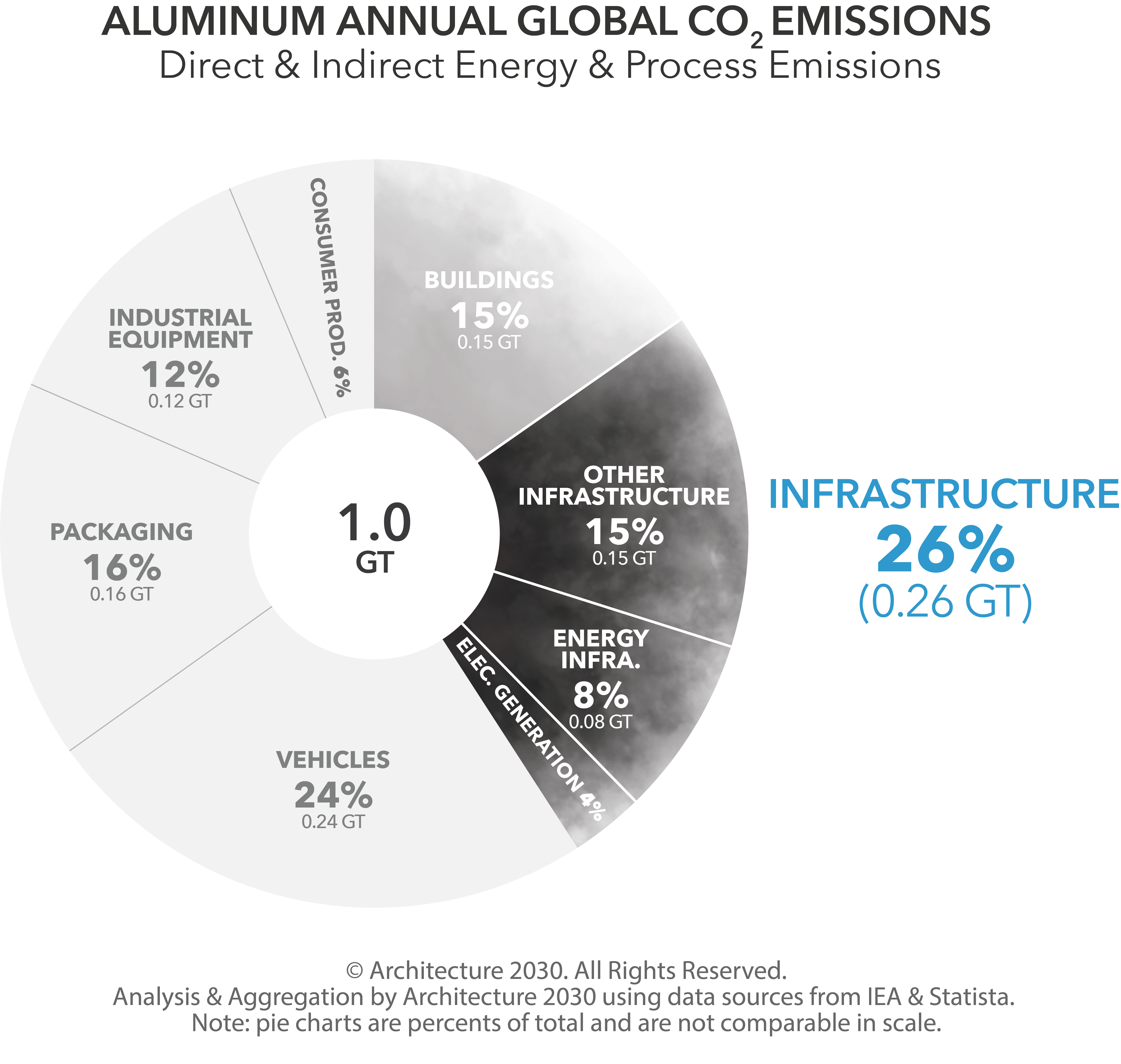WHY INFRASTRUCTURE?
Eliminate all CO2 emissions from infrastructure by 2040 meets the 1.5°Climate target.
Eliminate all CO2 emissions from infrastructure by 2040 meets the 1.5°Climate target.

Of those total emissions, cement emissions for infrastructure are responsible for approximately 3.9% annually, while steel, iron and aluminum emissions for infrastructure are for responsible for an additional 3.4% annually.
We also know that additional emissions from materials used in infrastructure – such as asphalt, aggregate, PVC and HDPE piping, glass, etc. – are still yet to be fully accounted for, and that urban planning decisions influence vehicle emissions as well.
We are expected to see the largest wave of infrastructure growth in human history: three-quarters of the infrastructure that will exist in 2050 has yet to be built.
Source: United Nations




Embodied carbon represents the carbon emissions associated with making infrastructure products and construction, from raw material extraction to manufacturing, transportation, and end of life disposal or recycling. It is anticipated that embodied carbon will be responsible for the majority of the carbon emissions associated with global new infrastructure between now and 2030. It is therefore crucial to address embodied emissions now to disrupt our current emissions trend, and because the embodied emissions of infrastructure projects are locked in once the project is constructed and cannot be taken back or reduced.
Architecture 2030’s mission is to rapidly transform the built environment from the major contributor of greenhouse gas emissions to a central solution to the climate crisis.
